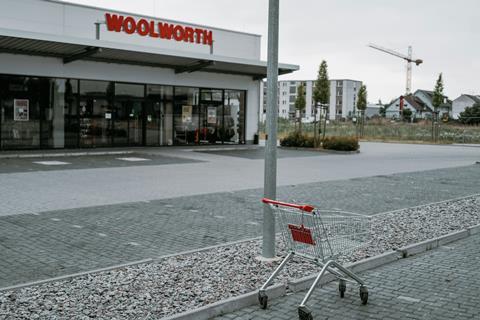
Roman Heini, the German owner of the Woolworths brand, has hinted the store could make a return to the British high street. But once the excitement and nostalgia has passed, it presents a tough question: what would Woolworths look like in 2024? And would it be able to survive the challenges that even the most established high street retailers are facing, and of which it once fell foul?
Let’s imagine Wilko didn’t meet its untimely demise, and the hitherto golden child that was John Lewis Partnership wasn’t making headlines for staff cuts and store sell-offs. Let’s imagine instead a blank sheet of paper for Woolworths to reinvent itself on – with a chance to bring excitement, energy and innovation to the UK high street.
The core question is, what unmet need can a 2024 Woolworths fulfil at scale, and who would be its audience? Here, the nostalgia and original recipe of Woolworths is a dangerous reference point. The stores closed in 2009. Fifteen years of retail innovation have since ushered in whole new categories of shopping.
Today, 20 to 30-year-olds may have no emotional connection with the brand. Even the 40 to 50-year-olds I spoke to don’t really connect with it, and couldn’t name what it sold. Books, CDs? Magazines? Stationery? Shoes? Really, it’s all the stuff you can now get on Amazon. The beauty of Woolworths was practicality laced with the fun of walking out with what you didn’t know you needed – and that bag of pick ‘n’ mix.
When looking at how to update that image, it’s useful to consider who on the high street is winning today – not just when it comes to sales, but also buzz and experience. M&S is an obvious candidate – proof that a clear, focused strategy and an unrelenting commitment to innovation and quality does, eventually, pay off. Primark continues to be a magnet for teenagers and adults alike. Superdrug has developed beautifully into the home of exciting beauty and skincare brands, finding its gen Z and gen alpha groove just as it turns 60. Flying Tiger delights with its unique and quirky blend of affordable, good-quality products, from toys to kitchenware and gym equipment, nailing seasonality and fun.
Affordability is a theme here, which makes sense when you think about most high street footfall. Retirees, parents, teens, workers on their lunch hour. What is going to make them visit a newly conceived Woolworths?
One thing that could attract shoppers is fast turnover of stock. The winning retailers all have new products and brands continually hitting the shelves. Speed is fundamental to driving frequency and repeat purchase, although today that comes coupled with a vital underpinning of sustainability strategy. The days of leisurely seasonality are well and truly over for the high street, no doubt driven by omnichannel as the norm.
Whilst the in-store experience and an omnichannel approach is critical, so is marketing. If it were me, I would be conceiving a new-look Woolworths as a thoroughly 2024 social-first brand.
Research from GWI bore out the behaviour we’re all seeing on social platforms. More 16 to 34-year-olds are using social media platforms to search instead of Google. Concurrently, people of all ages, but particularly 18 to 34-year-olds, are buying on social platforms.
#TikTokMadeMeBuyIt is one of the top trending hashtags globally and, as social has become shoppable, platform advances like TikTok Shop look set to continue the revolution. Whether it’s Instagram Shopping or Facebook Marketplace, these platforms are all developing very effectively around the purchasing habits of those with disposable income and the inclination to buy. What also needs to be factored in is the $250bn creator economy and the maturity of influencer marketing. Launching a new brand, or relaunching an old brand, can’t be done without starting here.
A new Woolworths has to, of course, sell the things people want and need at the right price point, but to succeed it can’t just be another practical Wilko – that isn’t enough in 2024. It needs to be a brand imagined for the social age, whose online and offline brand experience builds a community and engages directly with them. The in-store experience has to be, and give, so much more than the web/app experience. For me, that would mean creating a haven and paradise for the young and young-ish. A world of beauty, of music, of fast-flowing, stylish but affordable ‘stuff’.
It should harness the curiosity that Flying Tiger does so well, with a dash of Gymshark authenticity and innovation thrown in, combined with the tech of an Amazon Fresh or Uniqlo. And of course still offering, without a doubt, the world’s most unbelievable pick ‘n’ mix. My NPD budget would go there. And I would dedicate my marketing budget to the UK’s most exciting influencers discovering it, and flooding social platforms in a strategic and sustained way, to create a whole new cohort of superfans for the new Woolworths.



















No comments yet